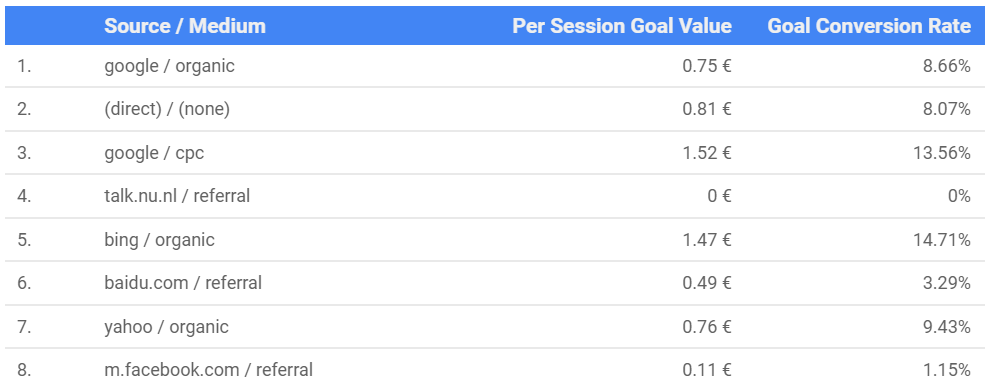Online marketing success hinges on Content Distribution


Jouw doelgroep gebruikt verschillende media, is jouw content overal te vinden?
For two months now, you’ve been working on it, the whitepaper that will put that new product on the map. The Head of Sales and the CEO are on board and can’t wait to showcase the results. At half past nine on Thursday, you hit ‘publish,’ and now it’s a waiting game.
After a week, the results are in, and they’re not bad—16,000 views and 400 requests for the whitepaper. It gets its place in the report, and you move on to the next action or campaign.
Have you squeezed everything out of it that’s in there?
With a well-structured Content Distribution Strategy (CDS), you not only ensure a higher return on investment (ROI) for your online marketing efforts, but your colleagues can also better appreciate your work due to increased visibility!
What is a Content Distribution Strategy?
A Content Distribution Strategy is a plan for widely disseminating a brand’s content to achieve maximum returns.
In your Content Distribution Strategy (CDS), each piece of content is outlined in terms of how you’ll distribute it and, of course, why. Many companies initially benefit most from a single approach per medium, as it enables them to be decisive and prevents reinventing the wheel each time. For example:
Distribution of a Blog or Article in B2B
The CDS for a new blog or article might look something like this:
- Publishing the article on our website
- Sharing the article on the LinkedIn Company Page
- Promoting the article to colleagues on LinkedIn
- Sharing the article on Twitter, Facebook
- Including the article in a periodic newsletter
- Paid promotion on LinkedIn targeting a specific audience (budget €200)
- Scheduling (in 2 weeks) a re-share of the article with a different title and description on LI, FB, TW
- Scheduling (in 3 months) a re-share of the article with the original title and description on LI, FB, TW
- Submitting or placing the article on industry websites/trade publications
- When should I publish my content?
The ideal time to publish your content depends on the platform. Here are the moments when your content is most likely to catch people’s attention, based on our experience:
When should I post content on LinkedIn?
Publish content on LinkedIn on Thursdays or Tuesdays, at the beginning of the workday (before 9 am) or just after lunch (12-1 pm). Saturdays and Sundays are rarely worthwhile because few people use LinkedIn on the weekends.
When should I post content on Facebook?
Facebook is a personal channel, so posts that are placed late in the afternoon (after around 3:30 pm) perform best as they appear at the top of the feed after work. There’s little to say about specific days; many people use Facebook daily.
When should I post content on Twitter?
Twitter is mainly used as a news source, and its use is somewhat similar to LinkedIn, but the timing of your tweets matters less. Use it on weekdays, preferably in the middle of the week. Keep in mind that after a few hours, your tweets may no longer appear in someone’s feed. Therefore, it’s a good idea to repost tweets more frequently on Twitter.
When should I post content on Instagram?
As a sibling of Facebook, you’ll notice that Instagram is used throughout the week. The audience is younger, and for many of our clients, it may not be highly relevant except for recruitment purposes. The timing of posts on Instagram seems to matter less.
Opportunities in Content Distribution Strategy
Repeating the sharing of the article and scheduling it in advance allows a larger portion of the target audience to see the content. At the same time, it requires little extra time on your part and reduces pressure on the content production schedule. This allows you to invest more time in the resources that will make a difference in the long run.
A robust CDS also ensures that when you evaluate, you can precisely explain how the results were achieved. This is always better than sharing an Excel sheet with numbers or a dull report.
Advanced Content Distribution Strategy
If you already have a basic Content Distribution Strategy and are looking to take the next step, we discuss three ways to expand your Content Distribution Strategy:
1. **Diversification of content**
2. **Campaign or target audience**
3. **Conversion optimization**
Do you have a specific aspect or question related to the Content Distribution Strategy that we should discuss? Please let us know, and we’ll be happy to include the answer.
Ideas for diversifying your content
Your article is making the rounds and performing well with a high conversion rate, the right target audience, and plenty of touchpoints for your sales colleagues. Your job is done.
That is until you realize that some people prefer not to read but to listen or watch. What do you do then?

Publiceer jouw laatste artikel eens als Video
You can also transform or expand an article into:
– Video
– Slideshare presentation
– Infographic or model
– Webinar
– Series of tweets
– Pinterest collection
– Podcast
– Event
– Training
Plenty of ideas to get more out of your previously delivered work. If the article or video is already in place, the most challenging work is already done; the rest is execution.
Campaign or Target Audience-Centric Content Distribution Strategy
A basic CDS provides an overview of how each type of content you publish should reach the target audience. However, you can take it a step further by creating a strategy for each target audience or campaign.
Content Distribution Strategy Based on Campaigns
A campaign often has a specific goal, usually to promote a particular product or service, but sometimes it could be a job profile or an event that deserves attention. By separately determining the CDS for these aspects, you can significantly improve the ROI.
For example, consider promoting the content on specific industry websites, in relevant LinkedIn groups, or through remarketing to visitors of specific website pages that align with the campaign’s goal. An additional advantage is that the less relevant portion of your target audience won’t see the message, leaving room for other content.
Content Distribution Strategy Based on Target Audience
Sometimes it’s straightforward—this content is relevant to this specific target audience. A junior engineer will never decide on the purchase of a new, advanced machine, and a CEO won’t be concerned with finding new cleaning staff. By focusing your Content Distribution Strategy on reaching a specific target audience, the plan of action will likely look completely different.
Conversion Optimization of Your Content Distribution Strategy
Once established, your CDS doesn’t have to be set in stone. Through conversion optimization, you can further improve your CDS.
This means you can experiment with things like:
– What time you publish content
– What title you use
– What “read more” text you include
– How much explanation accompanies the content
– How frequently you publish
– How often you post a (variant of) content
And there are probably 10 more factors we’ve forgotten. But the key is to search for the factors that will make your content even more successful. And success often depends on conversion: how many leads or contact points content generates. Therefore, make conversion a central focus in your evolving CDS.
That concludes the basics of a Content Distribution Strategy, enough to get started, we would say. If you’re curious about the ideal CDS for your brand, we’re here to help.


